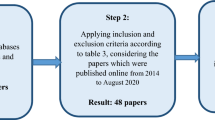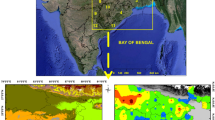Abstract
The average time interval adopted by the historical wind climate observation data of different meteorological stations worldwide is not uniform, leading to a conversion difficulty of the average time interval in the extreme wind speed estimation process. Early observation equipment requires manual intervention, leading to discontinuous data and estimated deviation. This study analyzed wind speed data recorded by 11 meteorological stations in normal wind climate areas to obtain average wind speed sequences with different average time intervals. The extreme wind speeds for some return periods were calculated. Subsequently, the influence of the average time intervals on the prediction results of extreme wind speeds was analyzed. Simultaneously, the data were extracted into a 2 min average wind speed series with hourly, 6-hourly, and no-spacing observation. The estimation results of extreme wind speed for the return periods based on these three data series were calculated and compared in detail. Extreme wind speed for a given return period decreases with an increase in the average time interval in normal wind climate areas and approximates an exponential attenuation. The difference between the extreme wind speed corresponding to the continuous observation series and that corresponding to the observation data series with a spacing of 1 or 6 h meets the Rayleigh distribution. This study proposes a conversion formula for extreme wind speed with different average time intervals in normal wind climate areas. A set of correction methods for wind speed observation data with observation spacings was provided for more accurate estimation results.













Similar content being viewed by others
References
Bingchao Z, Quan Yong Gu, Ming (2017) A method for estimating directional extreme-wind speeds in zones of normal climates. Eng Mech 34(9):119–124
Cook NJ (1982) Towards better estimation of extreme winds. J Wind Eng Ind Aerodyn 9(3):295–323
DSI-6405. Data Documentation for Data Set 6405 [DB]. National Climatic Data Center. ftp://ftp.ncdc.noaa.gov/pub/data/asos–onemin/, 2016.
DSI-6406. Data Documentation for Data Set 6406 [DB]. National Climatic Data Center. ftp://ftp.ncdc.noaa.gov/pub/data/asos–onemin/, 2016.
Durst CS (1960) Wind speeds over short periods of time. Meteorol Mag 89(1056):181–187
GB/T 25227 (2003) Ground meteorological observation standards. China Meteorological Press, Beijing.
Mike G, Valerie S, et al (2015) Effect of selective sampling of wind speeds on parent and extreme distributions. In: 14th International conference on wind engineering, pp 50–63.
Harper BA, Kepert JD, Ginger JD (2010) Guidelines for converting between various wind average time intervals in tropical cyclone conditions. World Meteorological Organization Press, Switzerland
Harris RI (2004) Extreme value analysis of epoch maxima convergence, and choice of asymptote. J Wind Eng Ind Aerodyn 92(11):897–918
Harris RI (2005) Generalised Pareto methods for wind extremes: useful tool or mathematical mirage. J Wind Eng Ind Aerodyn 93(5):341–360
Harris RI (2006) Errors in GEV analysis of wind epoch maxima from Weibull parents. Wind Struct 9(3):179–191
Harris RI (2009) XIMIS, a penultimate extreme value method suitable for all types of wind climate. J Wind Eng Ind Aerodyn 97(5/6):271–286
Peng H, Yintao D, Wang X et al (2013) Field measurement of typhoon winds near ground characteristics at different segment lengths in East China. J Build Struct 34(6):39–45
Statistical methods for national surface climate data (1961–1990) (Internal literature). Beijing: National Meteorological Information Center, 1990.
Wen L, Pingzhi F, Xiaotu L et al (2016) Study on the converting coefficients of maximum wind speed with different average time intervals for landfall typhoons. J Trop Meteorol 32(1):42–50
Acknowledgements
The authors gratefully acknowledge the support from the National Natural Science Foundation of China (51778493).
Funding
This was supported by the National Natural Science Foundation of China (51778493).
Author information
Authors and Affiliations
Corresponding author
Ethics declarations
Conflict of interest
The authors declare that they have no known competing financial interests or personal relationships that could have appeared to influence the work reported in this paper.
Additional information
Publisher's Note
Springer Nature remains neutral with regard to jurisdictional claims in published maps and institutional affiliations.
Rights and permissions
Springer Nature or its licensor (e.g. a society or other partner) holds exclusive rights to this article under a publishing agreement with the author(s) or other rightsholder(s); author self-archiving of the accepted manuscript version of this article is solely governed by the terms of such publishing agreement and applicable law.
About this article
Cite this article
Quan, Y., Wei, Q. & Xiao, Y. Influence of average time interval and observation spacing of wind speed records on prediction results of extreme wind speed. Nat Hazards 120, 805–824 (2024). https://doi.org/10.1007/s11069-023-06197-2
Received:
Accepted:
Published:
Issue Date:
DOI: https://doi.org/10.1007/s11069-023-06197-2




